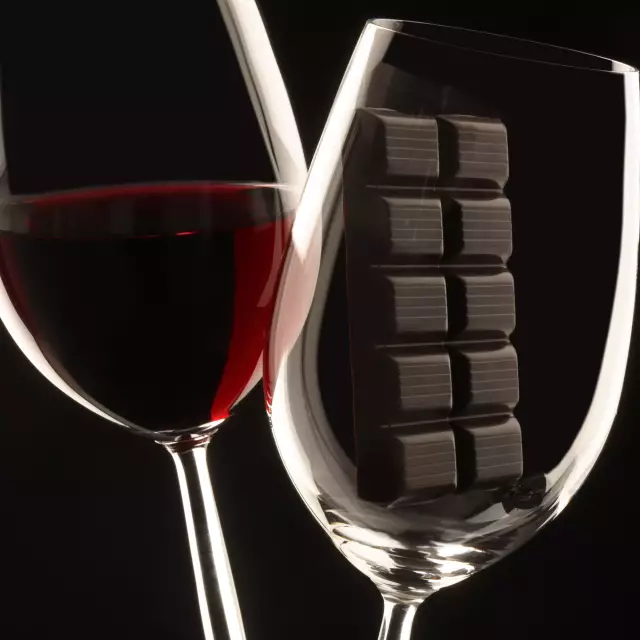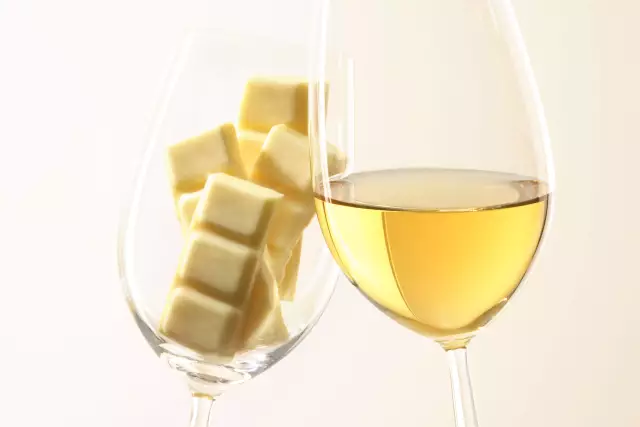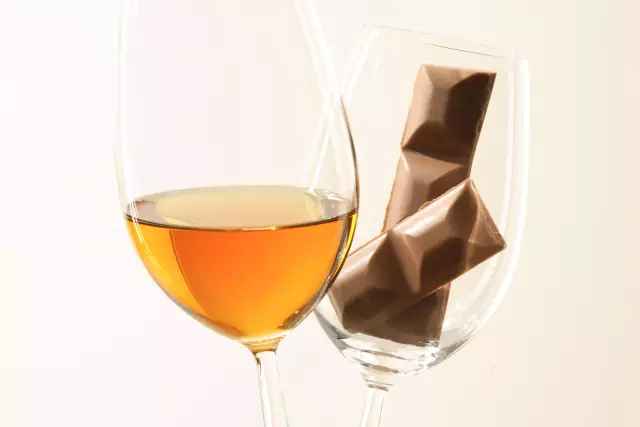Chocolate & Wine

Silky finish, incomparable sweetness, fine spices - wine or chocolate? Both can be described very well with these enjoyable attributes. And because these flavor components not only harmonize very well with each other in terms of taste, but even enhance each other, the combination of chocolate and wine promises completely new pleasurable experiences - you will simply melt away!
Facts
-
1544
was the first time, when chocolate was drunk at the Spanish court
-
7 Euro
costs a kilogram of cocoa beans
-
48 %
cocoa mass is founded in dark chocolate
The Chocolate Side of Wine
For a long time, the combination of chocolate and wine was considered incompatible. Admittedly, harmonious combinations of dry, fresh white wine with the melting and sweetness of chocolate are rather rare. The troublemaker in this relationship is the acidity of the wine, which can be pointed and dissonant in such a pairing.
Real Seduction Artists
But the liaison of chocolate with the melting and lush power of a noble sweet wine such as a Beerenauslese or even a Trockenbeerenauslese is truly seductive. Red wines are also a welcome companion to chocolate. Basically, the sweeter the chocolate, the sweeter and milder the acidity of the wine should be, so that the delicate balance is maintained.
A little gourmet tip from chocolate maker Eberhard Schell: Initially, you should taste the wine on its own. Then melt the chocolate in your mouth and sip the wine again. And then: just enjoy! Another sip of wine enhances the taste experience.
Chocolate is looking for Wine
Milk chocolate impresses with its silky finish and mild sweetness. Milk chocolates with a cocoa content of 32 to 49 percent harmonize perfectly with strong white wines from the Pinot family, but also with Riesling. The wines should also have a melty, creaminess, a subtle acidity and fine fruit notes. Mild Auslesen made from Riesling or Pinot Gris grapes, for example, are a good match. When it comes to red wine, varieties such as Lemberger, Cabernet Sauvignon, Merlot or Cuvées, that are low in tannins but can have a light vanilla note, are suitable.
Dark chocolates with 55 to 75 percent cocoa are wonderfully combined with fruity wines that bring some residual sweetness. Even sweet wines and fruity red wines like to enter into a liaison with these semi-sweet dark chocolate types, especially if they contain fruit.
Lovers of dark bitter chocolate containing up to 85 percent cocoa, swear by the pairing with dense, expressive red wines with smooth, but clearly perceptible tannins: dry Dornfelder and Lemberger, aged in barrels or wooden barrels, result in a wonderful balance with bitter chocolate.
A "Dream Wedding in White" - comes to mind if you let white chocolate melt on your tongue together with a fine fruity Riesling ice wine. The harmonic play arises here through the sweetness and finesse in both the wine and the chocolate.
No Problem when Choosing a Partner
Regardless of whether the chocolate is whole milk, dark bitter or nut: an aromatic wine goes with almost every sort. Particularly harmonious are Traminer, Muskateller and Scheurebe.
Chocolate maker Eberhard Schell: "Aromatic varities such as Traminer, Muskateller and Scheurebe combined with the right chocolate, achieve the best possible taste."
Eberhard Schell, Schell Chocolate Manufacturer
How does the wine get a chocolate touch?
Like vanilla or tobacco aromas, chocolate notes are usually created by aging and maturing the wine in barrique barrels. Among other things, roasted aromas are responsible for this, which arise from the toasting of the wood and are reminiscent of roasted cocoa beans.
Teaser
Events
-
Show
winetasting in our winery - cheese & wine
Mainz-Hechtsheim






